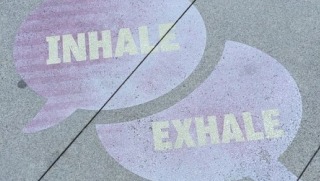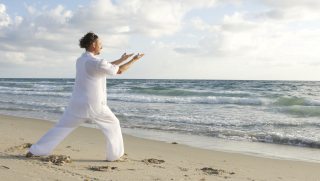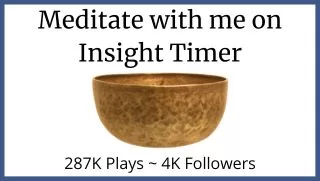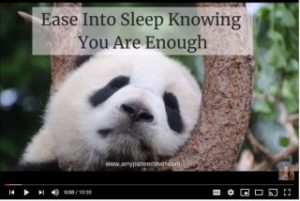Have you wanted to start a meditation practice but aren’t sure how to start it?
Let this comprehensive guide on how to meditate for beginners provide a road-map for getting your meditation practice started and sustained.
The benefits of mindfulness and meditation are often in the news. Meditation is a life-transforming learnable skill that may help you relax, deepen your self-awareness, and connect you with your inner wisdom.
The Benefits of Meditation
Many studies explore the benefits of meditation. Meditation: In Depth, published by the National Institute of Health, offers a comprehensive overview. Here are a few proven benefits of meditation:
- Pain Reduction: Using meditation as a method of focusing attention may help you intentionally notice other parts of the body that aren’t in pain. Also, meditation helps us learn how to accept events as they are. You become more aware of when your discomfort is more profound and when it is less.
- Lowers High Blood Pressure: Practicing meditation may help you minimize anxiety, depression, psychological distress, anger/hostility, and insomnia. Meditation has also been shown to help people increase their coping abilities. All of these attributes reduce blood pressure and ease cardiovascular circulation.
- Slows, Stalls, or Reverses Age-Related Brain Changes: A 2012 study illustrates that long-term meditation practitioners have more folds in the outer layer of the brain, which increases the brain’s ability to process information.
Another 2012 study suggests that meditation affects the amygdala, the brain’s emotional processor. It also posits that changes to the amygdala may be sustained even after the meditation is over.
As you explore online, you’ll find many other physical, mental, emotional, and even spiritual benefits of meditation. Given these benefits, why don’t all of us meditate?
Sometimes it is just hard to get started. In reality, meditating often seems like work or one more thing on the to-do list.
Sometimes we sit quietly, waiting for that enlightenment moment, and it feels like nothing happens. Then we criticize ourselves for not doing it right. Be patient with yourself.
For years I inconsistently meditated. I knew its benefits and often felt great after meditating. But still, many years passed before I developed a regular practice. Finally, during a rough patch in life, I realized that if I actually meditated every day that I might find a way through my difficulties.
Indeed that is exactly what happened. Experiencing the powerful and profound effects of meditation in my own life motivates me to help others to learn to do the same.
So, how do we start, then stick with, a regular meditation habit? Read on to find answers to questions and concerns I often hear from beginning meditators.
How to Meditate for Beginners: Your Body, Breath, and Environment
Find a quiet relaxing space
The easiest way to develop and stick with a meditation practice is to create a routine or ritual around it.
Find a place, either inside or outside, that you find to be peaceful, calming, and comfortable.
Ideally, this space is free from clutter and everyday distraction. If you like, for ambiance, you can light a candle or burn incense. However, this is not a requirement.
The most important thing when starting or maintaining a habit is finding a comfortable space where you are free from distraction.
Settle into a comfortable position
A comfortable position is different for everyone. I love sitting on a cushion on the floor. But for many people, a chair is a better option. Honor your body. It is okay to choose a floor cushion one day and the chair the next.
The key is finding a position where you can be alert and relaxed.
Some forms of meditation require complete stillness in a specific posture. On the other hand, I practice and teach a style of meditation that honors comfort.
Choose something that works best for you.
Part of being comfortable is being warm enough, but not too hot. Adjust your room temperature. Open some windows or have a light blanket handy. Do whatever it takes to remove temperature as a distraction.
When you sit, tilt your pelvis slightly forward. This gentle forward tilt allows the weight of your torso to rest on your vertebrae, reducing the need to rely solely on your back muscles to hold you upright.
Don’t slouch backward onto your pockets. Slouching creates too much stretch in the lumbar spine, which can cause low-back discomfort.
If you need to, lie down. However, this may lead to daydreaming or napping.
You can sit with your legs crossed in a lotus position or your feet tucked behind you. There is no right or wrong, as long as you are comfortable.
Your hands can rest in your lap, on your thighs, or you can press your palms together in front of your heart. Again, whatever creates comfortable, relaxed, alertness is essential.
Drop your gaze or close your eyes
Closing your eyes helps you disconnect from distraction.
Also, as your meditation practice deepens, closing your eyes allows you to connect more fully with your inner wisdom. However, if you’re feeling sleepy, opening your eyes can help you stay awake.
If you opt to open your eyes, have a soft unspecific gaze toward the ground in front of you at a 45-degree angle.
Breathe slowly and deeply
Release attachment to breathing into or out of the nose or mouth. Do what is comfortable for you. I typically breathe into and out of my nose. Experiment and see what works well for you.
Initially, don’t force your breathing: simply allow it to flow.
At first, your breaths may be shallow and quick, but intentionally slow and deepen your inhalations and exhalations.
Allow your abdominal muscles to relax. This relaxation, in turn, allows space for your diaphragm to fully expand and contract as you breathe deeply in and out. As a side benefit, this full movement of the diaphragm offers a gentle massage for your internal organs.
As you breathe deeply, you’ll notice you become more relaxed and calm. Allow your mind and body to settle with each breath cycle.
For further information, How to Breathe While Meditating offers a full discussion on best practices for meditation breathing. At first, your breaths may be shallow and quick, but intentionally slow and deepen your inhalations and exhalations.
Intentionally relax your body
Now that you are comfortable and breathing deeply begin consciously relaxing your body.
Start with a simple body scan. Start at the top of your head and slowly draw your awareness down your body, noticing any areas of tension or tightness.
When you notice these areas, pause there for a moment to see if you can deliberately relax the tension.
Listen to this guided meditation on Transforming Tension into Vitality for a slightly more advanced version. In this meditation, we find an area of tension and initially imagine it as a large block of ice. As we continue breathing deeply, we visualize transforming the ice into a pool of water. The water then transforms into air which then transforms into pure vital energy. Once the tension in an area dissipates, scan through the body to find the next area of tension and repeat.
Gratitude For Our Bodies is another excellent guided meditation to help you relax areas of tension in your body.
How to Meditate for Beginners: Useful Tools
Guided meditation as a tool
When I first learned how to meditate from my Taoist teacher, guided meditation was not part of our practice.
It still isn’t. I like silence. I enjoy the quiet and simply focus on the sound of my breath. I appreciate that I learned how to meditate without supplemental tools.
However, when I participated in the teacher training program for Stanford University’s Compassion Cultivation Training (CCT) we were instructed to listen to guided meditations every day for six months.
Early on, we had a question and answer evening with the senior author of the curriculum, Thupten Jinpa, the principal English language translator for the Dalai Lama.
I asked him if he incorporated guided meditation into CCT as a way to make meditation more accessible to a western audience.
He replied that, in Tibetan Buddhism, guided meditation was an integral aspect of focus training.
The guided meditations within the curriculum were, therefore, pivotal in helping us focus on, learn, and embody compassion.
I never looked at guided meditation the same way again.
When I feel distracted, or want to focus on something, in particular, I’ll turn to guided meditation.
In fact, on a 2017 climb up Kilimanjaro, I offered guided meditation to our climbing group as a way to help relieve some of our physical discomforts and to connect more deeply with the energy of the mountain and the nature around us.
A fantastic source for free guided meditation is the Insight Timer app. If meditating in a virtual community or keeping track of your meditation statistics is appealing to you, this is the app for you.
As a middle point between silence and voice, sometimes it is nice to listen to sound or music. The Relaxation Station is a YouTube channel that has a variety of nature sounds and soothing music. Insight Timer is another option for finding great background sounds. Sometimes when I want a gentle background sound to help me stay focused, I choose an om chant.
The choice of music or background sound is an entirely personal preference. Experiment and see what works well for you, and know that you can opt for something different tomorrow than what you did today.
Use a timer
A great tip for learning how to meditate as a beginner is to start by using a timer. My favorite meditation timer is the Insight Timer app. I started using this app long before it incorporated guided meditation and social elements. You can set a simple block of time. You can create a timer that has chimes going off within the chosen block of time, and you can select background sounds if you want them.
A timer helpfully encourage you to stick with your meditation even if you feel like you are ready to be done.
We naturally ebb and flow into and out of light and deep meditative states, or states of distraction. Sometimes a timer is a gentle encouragement to sit a little longer, which in turn allows us to sink deeper again.
If you’re in a time crunch, a timer also helps remove the distraction of wondering if you’ve been sitting too long.
Lastly, if you find that you really can’t settle into meditation at the moment, don’t force it. Be kind to yourself, and acknowledge that this moment in time isn’t the right time.
Get up, get a cup of tea, take a walk, or move onto the next thing. Come back to the meditation at a different time. If you’re not settling into the meditation, be kind to yourself and honor your distraction rather than beat yourself up.
How to Meditate for Beginners: Tips for Focusing Attention
When you’re first learning to meditate, or even if you’ve been meditating for years, it can be challenging to put mind wandering to the side. A 2010 study even suggests that an unfocused wandering mind is an unhappy mind. However, attention and focus are trainable.
Inhale/Exhale
One option to help you get started is to silently say the word inhale each time you breathe in and exhale each time you breathe out. This helps not only focus the mind but also connect your attention to your body.
Count
Another option is to count. Commonly meditation teachers suggest counting to five or ten, one increment per breath cycle. However, Dr. Herbert Benson of the Benson-Henry Institute for Mind Body Medicine has another idea.
He found while doing stress response studies on Harvard medical students that they would lose track of their way to counting to ten, which increased their stress response.
He tried having them count to five, and they still lost track.
So he settled on suggesting that they count to one. Finally, he began to see the results he anticipated.
If you want to count, play around with what works for you, and if you find that merely counting to one is most relaxing, go for it.
Use a Mantra
Similar to the idea of counting to one is using a mantra. A mantra is a word that you choose, which you repeat over and over with each breath cycle. It could be love, peace, joy, or any other word that warms your heart. Alternatively, for even less distraction, choose a random word that has no emotional value to you.
Ultimately, don’t worry about whether you are meditating the “right” way. Release any concern you have for achieving a deep level of relaxation. Rather, allow your experience to unfold at its own pace.
When distractions arise, acknowledge them, set them aside, and return to the breath, count, mantra, or whatever tool you’re using.
This useful infographic is an easy to follow guide for the five elements of meditation: attention, detachment, mindfulness, wisdom, self-compassion.
How to Meditate for Beginners: Frequently Asked Questions
How often should I meditate, and for how long?
Ultimately, the answer lies with you.
One thing I often hear from students is that they don’t have time to meditate.
That might be true if you believe you need to set aside 30 to 60 minutes to meditate. However, it is possible to train yourself to meditate in as little time as one minute.
Developing a regular practice is more important than how much time you spend every day. Also, exploring why you want to meditate helps determine how long each session should last.
If you’re struggling with something, perhaps a decision or an area of personal growth, longer sessions may be helpful.
If you are intentionally developing your ability to focus or striving to lower your blood pressure, sessions of 10 minutes or longer may be beneficial.
The most important thing is the quality of the meditation rather than the length.
I invite you to commit to meditation daily without expectations. Even if you do so for only a minute or two, get into a daily habit. Rather than see it as a chore, or one more thing on your “to-do” list, consider it a joyful opportunity to spend time with yourself. Value yourself enough to find the time.
I used to sit with a group that meditated for 45 minutes once a week. I love the energy that arises when meditating with a group. Their tradition was different from mine, which made no difference to me, and I rarely sit for 45 minutes unless I’m with that group.
My meditation often wavered, and I’d wonder how much longer we had to sit. But, because I wanted to enjoy the company of the group and enjoyed the challenge of sticking with it for 45 minutes I’d acknowledge the distraction and go back to my breath. Inevitably I’d sink back into the mediation, and time would flow.
One day a participant mentioned that it was a good thing we sat for 45 minutes because it took her 15 minutes to settle down enough to meditate. I loved hearing that observation. It reminded me that though we’re all striving for the same goal, quality meditation, we all get there differently. For her, it took 15 minutes to settle into meditation. For me, I can drop into a meditation instantly but may have a hard time maintaining that level of focus for 45 minutes.
There is no right or wrong amount of time. The sincerity of the intention is what matters. Find what works well for you.
I find it hard to sit still during meditation; what can I do?
I love integrating movement with stillness during meditation. I’m not always inclined to move, but I enjoy knowing that movement is an integral part of meditation, at least for me and the way I practice.
My primary background is Taoist, and an essential part of my meditation practice is connecting with my internal energy (qi).
I’ve found that an element of my BodyMind IntelliSense course people enjoy most is our discussion of and use of movement.
We incorporate mudra meditation, qigong, connecting movement to strong emotions to help us learn to embody emotion rather than intellectualize it, as well as explore connecting with our qi via free-flowing unstructured movement.
If you like to move, options to consider include:
- Walking in nature: For a section of your walk, decrease your speed and intentionally pay attention to what sounds you hear, the temperature of the air, what the ground feels like, and how your body feels.
- Formal walking meditation: Place your hands on your belly or at the small of your back. Take one step forward, leaving your weight on the back foot until the front foot fully plants, then lift the back foot and step forward, planting it solidly before moving the back foot, and so on. Draw your attention inward to your breath and body rather than noticing the surrounding environment.
- Using mudras: Do some research and find a few mudras that you’d like to practice. Then set a meditation timer to chime every minute or two and change mudras with each chime. Using a chime and staying connected to our internal energy and body through the use of mudras is an effective way to combine seated meditation with movement.
- Practicing qigong: I love practicing qigong, especially in a group. Join my Monday morning Zoom qigong and start your week feeling happier in body, mind, and spirit.
I don’t feel like anything is happening when I meditate, am I doing it wrong?
A key component of meditation is letting go of expectations.
Intentionally paying attention to your breath and body, while minimizing mental distractions is the essence of meditation.
Sometimes this process yields terrific results. You feel lighter, more joyful, more relaxed, or invigorated.
Sometimes you feel nothing. Zip. Nada. Same as before. Don’t become discouraged if you feel like nothing happened.
Something did happen.
We may not notice at a conscious or physical level that anything transpired. However, internally, transformation takes place.
This subtle transformation is one more reason to develop a daily meditation habit.
Rewiring our brain and creating change takes time and effort. We may not have amazing experiences daily in our meditation, but through regular practice, we build a foundation so that sometimes, when we least expect it, transformation occurs.
The benefit of regular meditation practice is like fruit ripening on a tree. The ripening process is slow. We may not be able to see daily change, but without a doubt, evolution takes place. Every minute you put into calming and focusing your mind while connecting with your heart and inner wisdom is never wasted.
What are some meditation techniques for beginners prevent falling asleep?
Sitting up with a comfortable yet relaxed posture rather than lying down is an excellent place to start.
As a second step, partially opening your eyes with a soft gaze to the floor about 45-degrees in front of you is helpful.
If you still find yourself falling asleep, take a nap. Sometimes the body needs sleep more than it needs meditation. Try meditating again after you wake up.
Sometimes it is useful to use guided meditation to help you calm your mind enough to sleep. If you intend to fall asleep, then using meditation as a way to ease the brain and body may be a useful tool.
If you still find yourself falling asleep, take a nap. Sometimes the body needs sleep more than it needs meditation. Try meditating again after you wake up.
Sometimes it is useful to use a guided meditation to help you calm your mind enough to sleep. If your intention is to fall asleep, then using meditation as a way to calm the brain and body may be an effective tool.
Why do I sometimes cry or feel strong emotion when I meditate?
The process of meditating requires us to sit with ourselves.
As we sit with ourselves, we begin to notice ideas drifting around in our minds, feelings in our hearts, or tensions in our bodies that we may have been suppressing or denying.
Being present for ourselves with an open heart and accepting mind allows ideas and feelings to bubble up.
At times this can be painful and lead to emotional release. Deeply feeling emotions is not a bad thing. It is a transfer of energy. It may be uncomfortable, but the long-term result is valuable leads to peace of mind and resilience.
For example, years ago, at a weekend meditation workshop, my teacher taught us a 16-pose mudra series.
At that time I was slipping into a round of situational depression, a mindset quite familiar to me. I felt that freight train of depression coming straight for me, and I knew I how much I didn’t like wearing that heavy blanket of dark fog.
The last thing I wanted to do was meditate. I didn’t want to spend time sitting with myself.
It was uncomfortable. I’d cry. I’d beat myself up for not being good enough — it was easier to skate along the surface of life and not look at what was going on.
It turns out I was instructed to do this mudra meditation twice daily for the next two weeks, holding each mudra for two minutes.
Ugh. I protested. I said I didn’t want to. I was afraid that I was on the cusp of what felt like the most profound depression yet, and I was scared to sit with myself. My teacher told me that though it may be true, I had new tools, and if I’d use them, I’d move through the depression quickly.
I trusted him. I did what he instructed. I haven’t had another bout of situational depression, and a decade has passed.
I’m not saying meditation is a magic cure-all. I am saying it is worth exploring to see what benefits you gain from it.
Above all, remember you are human. You have emotions. Sitting with, feeling, and exploring emotions is healthy. Be patient and tender with yourself in the process.
Do I need a meditation teacher?
Many resources for learning meditation are available via the web, apps, and books. These resources are a great way to learn how to meditate for beginners and get started with your meditation practice. In fact, you’re here right now because you’re curious and want to learn.
However, I believe two primary benefits arise from finding a meditation teacher.
The first is the wisdom, insight, and support that arises from working with a teacher.
I was lucky and found the right teacher for me the first time I attended a meditation workshop. I have been with him for over 30 years.
Without his insight and encouragement, I may not have stuck with meditation. Certainly, it would have taken me longer to get where I am.
The second is the energy that arises from meditating and learning with others.
In a group, you begin to realize that you are not alone in your struggles. When the teacher addresses another person’s challenges, it may seem like your problem is being solved.
As people come together in meditation, energy blends and harmonizes. This makes it easier to stay deeply connected to meditation for longer periods.
Although working with a teacher involves a commitment of time and money, consider the investment as part of your overall health plan.
Each time you meditate with a group of people, attend a weekend workshop, or a more extensive meditation retreat, you deepen your skills. Even after 30 years, I still attend at least one weekend or week-long retreat each year. I’ve found that every time I meet with my teacher, I learn something new and have something to take home with me to help me deepen my practice.
Do an internet search for meditation teachers near you. Ask friends if they know of a teacher they like. Or, research what style of meditation sounds interesting to you and find someone who teaches it. Try a variety of styles until you find one that resonates with you.
Enjoy the process!
I wish you well as you develop your meditation practice. If you need support, the BodyMind IntelliSense or Compassion Cultivation Training courses are wonderful places to begin.





















